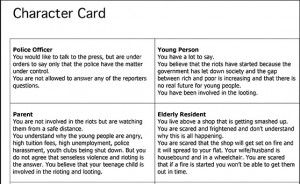Naming – Jacob Brown
“Naming ourselves in the world involves a mapping, locating ourselves in time and space, in historical and cultural context, putting ourselves in a bigger picture, seeing ourselves as part of a longer journey. Naming also invokes telling: To name is not only to declare who we are but to make sense of our lives. Telling our own stories affirms our power to write our own histories and our participation in making our history.”
[Pat Campbell, Barbara Burnaby (eds) ‘Participatory Practices in Adult Education. Taylor & Francis e-Library,2010. Page 38]
Naming something can be seen in two lights, with two outcomes.
1. Naming that ends up ‘labelling’ someone, can end up inhibiting the progress of that person or group. The label given to the person or group can determine or influence them to live up to the term that is used to describe or classify them.
2. The opposite of the naming continuum is more in line with Barndt’s ideas that WE, the individual need to identify who we are first, to establish a platform to go forward and make sense of our lives and the world around us.
In 2011 I worked on a project with a group of young carers. This project involved the young carers identifying and articulating issues that had affected them and they used ‘naming’ as a powerful foundation to build their project around. ‘Naming’ their world, not only impacted on their own lives, but others outside of their immediate community.
Here is the video the young carers made. Skip to 4’23 to see how naming can impact others.
Young Carers – catapulted into Maturity
The project I facilitated was a ‘learning through journalism’ participator project with a group of young people from Islington, North London, run by the youth media charity Headliners. The ages of the young people ranged from 12 – 19 years. This group of young people had already named themselves as ‘Young Carers’, through association with an organisation called Family Action that worked with the young carers to proved advice, support and a connection with other young carers.
The young people wanted to make a short film that could be used to raise the awareness of young carers and could be screened at their schools and at Family Action events.
While out conducting vox pops for their film, they came across a young boy called Kai. Kai did not know what a young carer was, but through the interaction with this group of young film-makers, he had learnt something new. The naming process that the young carers had gone through which had helped make sense of their lives, had now informed Kai, and the interaction with the young film-makers had alerted Kai to the fact that he was also a young carer and that there was support out there for him.



